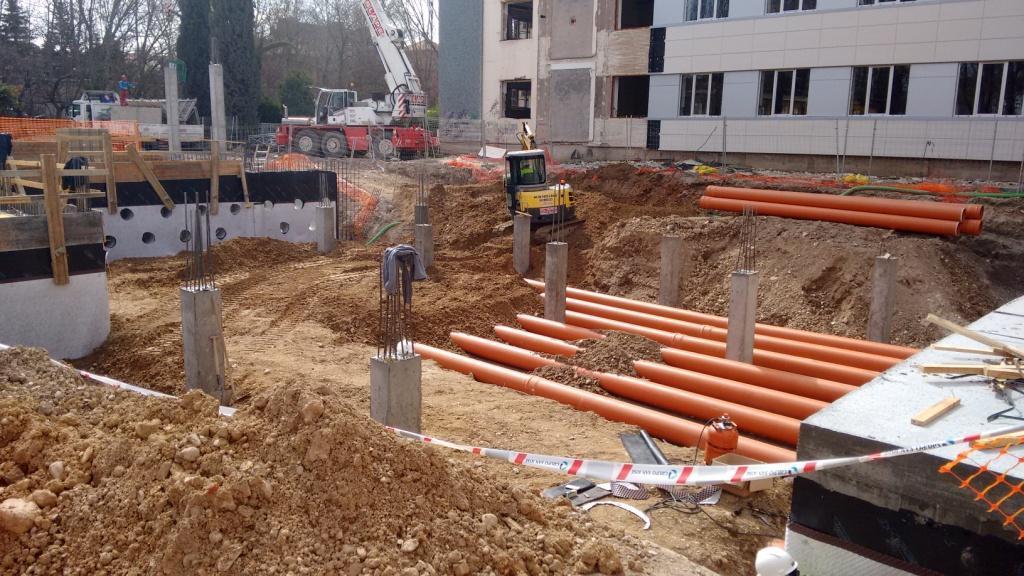What is Canadian Well?
The Canadian well is a technique that allows us to take advantage of the heat of the subsoil. The design is based on the installation and movement of air ducts in the subsoil to a depth between 2 and 4 meters and a length of around 35 meters. The duct can be made of a single tube, several assembled tubes, arranged in a straight line, meanders, or loops around the house. It can also be made up of several parallel antennas to ensure a greater airflow or to compensate for a too short distance.
The land receiving the Canadian well must not be protected from weather conditions (sun, cold, water), so a Canadian well cannot be placed under a building or under a waterproof covering (bitumen, slab). The installation must be as simple as possible and carried out perfectly because repairing or changing a Canadian well is very expensive and difficult.
The diameter of the pipes
The choice of the pipe diameter is determined by the quantity of air to be circulated in cubic meters per hour (m³/h).
For a house, the most commonly used diameters are 150 mm and 200 mm.
If it is too large, it won’t optimize the ground/air heat transfers.
Too small a diameter will provide insufficient air circulation, increase pressure losses, and thus increase fan consumption.
For an optimal exchange, the airspeed must be between 2 and 4 meters/second in the Canadian well :
If the speed is too high, the heat exchange time will be disturbed.
If the speed is too low, the heat exchange is reduced because the air does not rub the walls of the pipe hard enough (lack of pressure).
The length of the pipes
As far as possible, an exchange length of 30 to 60 meters is needed to limit heat loss and to give the material time to exchange its calories (the hot going towards the cold).
In some cases, especially at higher altitudes, above 500 m, the length of the Canadian well must be increased to compensate for long periods of cold, 60, 70, or 80 meters.
Pipe burial depth
Canadian well pipelines must be buried a minimum of 2 meters, or much more: 6 meters for some applications. The ideal depth is about 3 meters because this is the compromise between an efficient result and an earthwork at the edge of very complex standards).
Canadian well pipe-laying rules
A minimum slope of 1% and a maximum slope equal to the slope of the land is required to maintain the Canadian well or recover condensate if present. If there is too much slope on flat land, the depth of burial is reduced and the yield is therefore less.
The pipes must be laid on an incompressible, stable, and non-slip bed. Sand is not recommended here because sand tends to be swept from underneath the pipes and the pipe bedding becomes non-existent, so leakage is inevitable. The ideal is crushed support such as “rice grains”.
The plugging is done with the excavation material to simplify the construction site. In some cases, the available material is not suitable (for instance, here you can use sand as it is an excellent draining material, so it dries out the subsoil; and water can improve heat exchange, so heavier, greasy and sticky soil such as clay, loam, peat or plant material should be used).
Criteria to be taken into account
The conduit is the most important component of the Canadian well. It is the one that exchanges calories with the soil.
Conductivity
The material must have a high thermal conductivity (as little insulation as possible) and the conductivity of the material is called Lambda.
Air quality
The quality of the air is essential so that there is no development of bacteria due to the possible presence of stagnant condensation (laying not perfectly flat), nor any release of volatile organic compounds VOCs (plastics under the effect of heat, in particular).
Waterproofing
A Canadian well must be 100% watertight; if water seeps in, air will no longer pass through the pipe and the installation will be unusable. A naturally radioactive gas called radon is present in the soil; it should not be piped into the habitat. Some commercially available installations do not provide a perfect and durable seal (notably the gravel infiltration well and the siphon buried 2 meters underground).
Resistance
The resistance to burial and deformation over time is important: some pipes (especially plastic) become oval over time because of the drop in load and because they are not encased by an incompressible material (but an incompressible material is necessarily draining and therefore not suitable for heat exchange).
This post will continue in part 2 where we will cover the selection of materials to build your Canadian Well.


